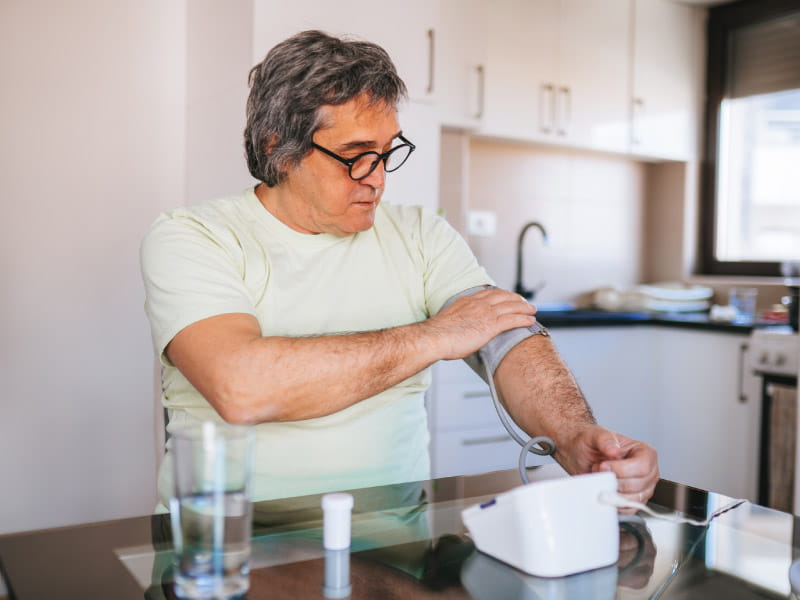Blood pressure measurements in the clinic may vary widely between doctor's visits
By Laura Williamson, American Heart Association News

Blood pressure measurements taken in a medical office can vary widely between visits, new research finds, offering further support for guidelines that call for supplemental home monitoring.
"These large variations in blood pressure measurements pose a great challenge to determine whether hypertension treatment is actually working," said lead study author Yuan Lu, an assistant professor at the Yale School of Medicine in New Haven, Connecticut. "It makes clinical decisions very difficult."
The study, published Wednesday in Circulation: Cardiovascular Quality and Outcomes, was designed to show how ineffective it can be to rely solely on office-based measurements, she said.
Nearly half of U.S. adults have high blood pressure, also called hypertension, and just 1 in 4 have the condition under control. High blood pressure is defined as having a systolic blood pressure – the top number – of 130 mmHg or higher or a diastolic reading – the bottom number – of 80 mmHg or more.
Research shows uncontrolled hypertension can lead to heart attacks, strokes, heart failure, kidney disease, vision loss and other health conditions. High blood pressure in midlife and beyond also has been linked to cognitive decline and dementia.
Guidelines from the American Heart Association and American College of Cardiology recognize that readings vary between medical office visits and recommend out-of-office measurements, using home or ambulatory devices, to supplement those taken by health care professionals.
However, the use of out-of-office monitoring devices remains limited, Lu said. "The majority of patients treated for hypertension are treated based on office-based measurements."
Lu and her colleagues analyzed more than 7.7 million blood pressure measurements for 537,218 adults, who were an average 53 years old and treated in the Yale New Haven Health System. Patients had an average of 13 outpatient visits each during a roughly 2.4-year period.
Overall, the analysis found wide variations in blood pressure measurements between two consecutive visits, averaging about 12 mmHg. Among people with blood pressure in the normal range, systolic levels varied an average 6.3 mmHg between two consecutive visits. But among those with extremely high blood pressure – above 180 mmHg systolic – levels varied considerably more, an average 32.3 mmHg.
The analysis found that if a person with high blood pressure was given medication to lower systolic levels by 10 mmHg, they would see a reduction of 5 mmHg or less at the next visit 37% of the time and no reduction 25% of the time. It would therefore take about four follow-up visits to be 80% certain a patient's systolic blood pressure had been lowered.
Office-based measurements also may be higher than those taken at home, said Dr. Wanpen Vongpatanasin, program director of the Hypertension Fellowship Program at UT Southwestern Medical Center in Dallas.
"Measurements taken in a doctor's office don't reflect real life," said Vongpatanasin, who was not involved in the new research. "When you check it at home, it might be normal. There are a number of factors that can affect readings."
For example, some people see a spike in blood pressure readings only at the doctor's office, in what's known as "white coat" hypertension, because they feel anxious when they visit a medical professional. The type of machine used to read blood pressure, human error, lack of staff training and using the wrong cuff size also can affect readings, Vongpatanasin said.
"At home, you have the ability to take a reading without any distractions or anything that causes you anxiety," she said.
The AHA and ACC guidelines say to use a validated automated upper-arm cuff to measure blood pressure at home, making sure to use the correct-sized cuff. To find a validated device, start with the American Medical Association website validatebp.org.
To accurately take a measurement, don't exercise, smoke or consume caffeine within 30 minutes before measuring your blood pressure. Empty your bladder and quietly sit still for at least five minutes.
The arm being used for measurement should be on a flat surface, such as a table, with the upper arm at heart level. The bottom of the cuff should be directly above the bend in the elbow against bare skin. Sit with your back straight and supported, with feet flat on the floor.
Take at least two measurements one minute apart in the morning before taking medications or eating breakfast and again in the evening before supper.
Not everyone can afford a home monitoring device, Lu said. Patients who don't have access to one should return to a health clinic for more frequent measurements or use a blood pressure kiosk at a local pharmacy.
"If the patient comes to the clinic and measures just once, it gives only a snapshot of how well their blood pressure is controlled," Lu said. "We really need other measures to see how accurate this is."





